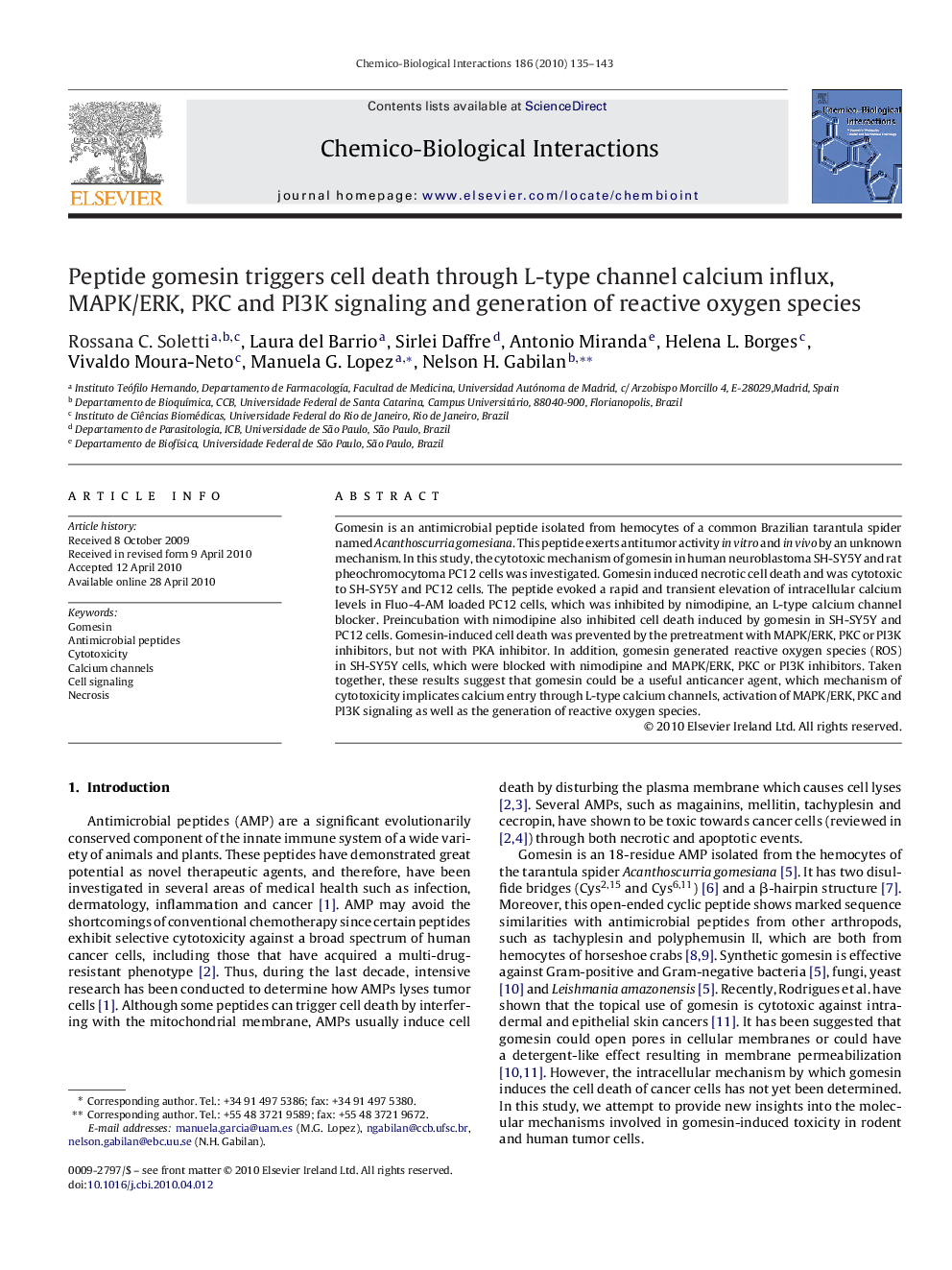| کد مقاله | کد نشریه | سال انتشار | مقاله انگلیسی | نسخه تمام متن |
|---|---|---|---|---|
| 2581901 | 1130212 | 2010 | 9 صفحه PDF | دانلود رایگان |

Gomesin is an antimicrobial peptide isolated from hemocytes of a common Brazilian tarantula spider named Acanthoscurria gomesiana. This peptide exerts antitumor activity in vitro and in vivo by an unknown mechanism. In this study, the cytotoxic mechanism of gomesin in human neuroblastoma SH-SY5Y and rat pheochromocytoma PC12 cells was investigated. Gomesin induced necrotic cell death and was cytotoxic to SH-SY5Y and PC12 cells. The peptide evoked a rapid and transient elevation of intracellular calcium levels in Fluo-4-AM loaded PC12 cells, which was inhibited by nimodipine, an L-type calcium channel blocker. Preincubation with nimodipine also inhibited cell death induced by gomesin in SH-SY5Y and PC12 cells. Gomesin-induced cell death was prevented by the pretreatment with MAPK/ERK, PKC or PI3K inhibitors, but not with PKA inhibitor. In addition, gomesin generated reactive oxygen species (ROS) in SH-SY5Y cells, which were blocked with nimodipine and MAPK/ERK, PKC or PI3K inhibitors. Taken together, these results suggest that gomesin could be a useful anticancer agent, which mechanism of cytotoxicity implicates calcium entry through L-type calcium channels, activation of MAPK/ERK, PKC and PI3K signaling as well as the generation of reactive oxygen species.
Journal: Chemico-Biological Interactions - Volume 186, Issue 2, 30 July 2010, Pages 135–143